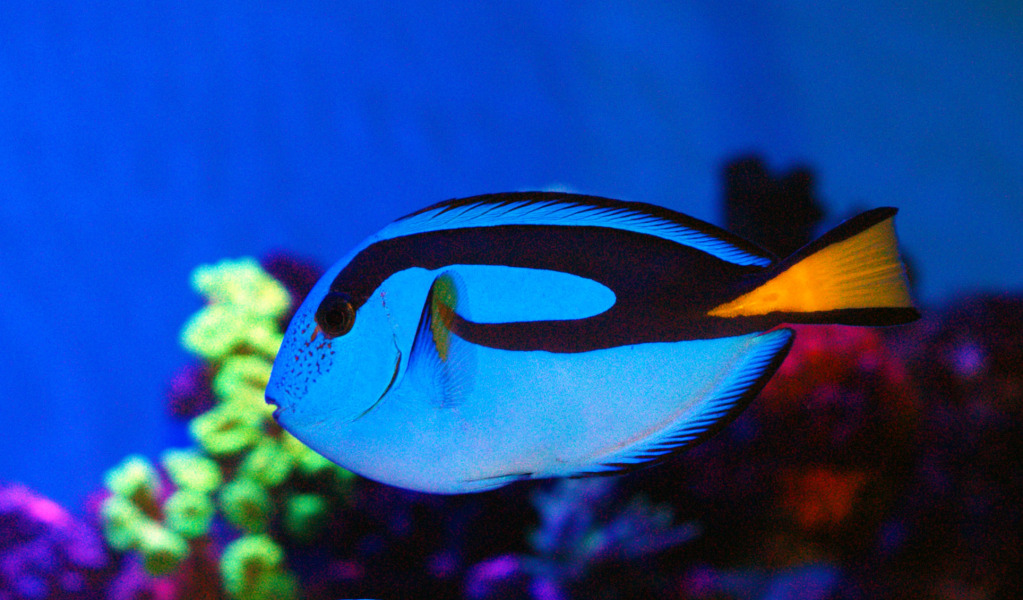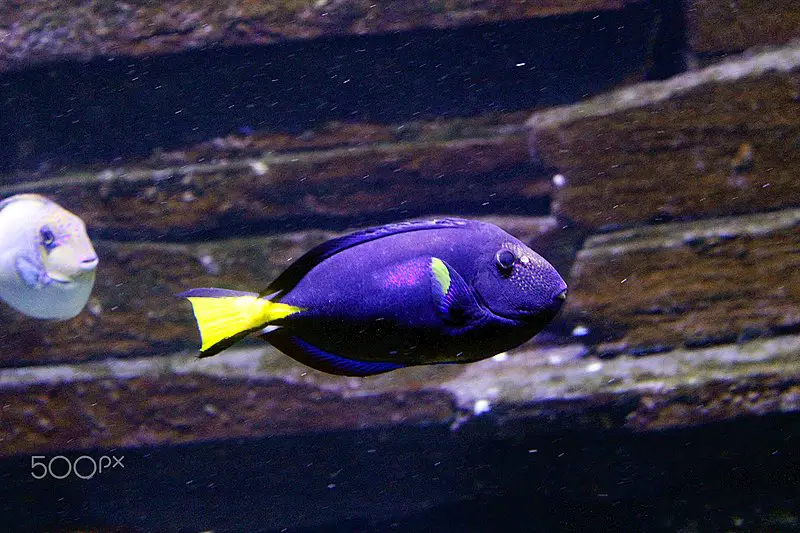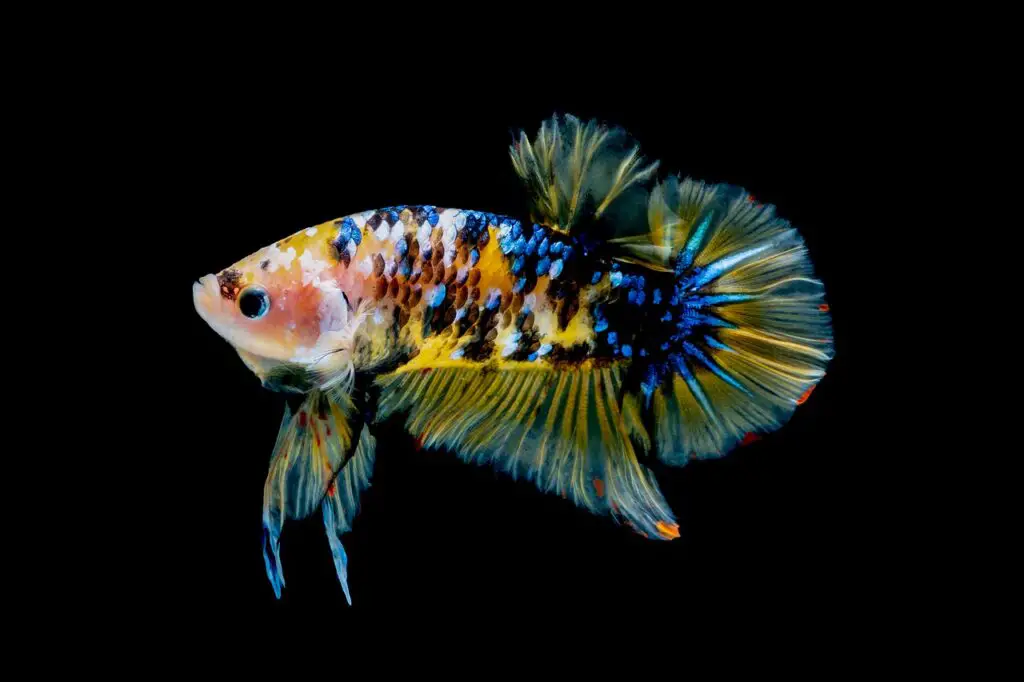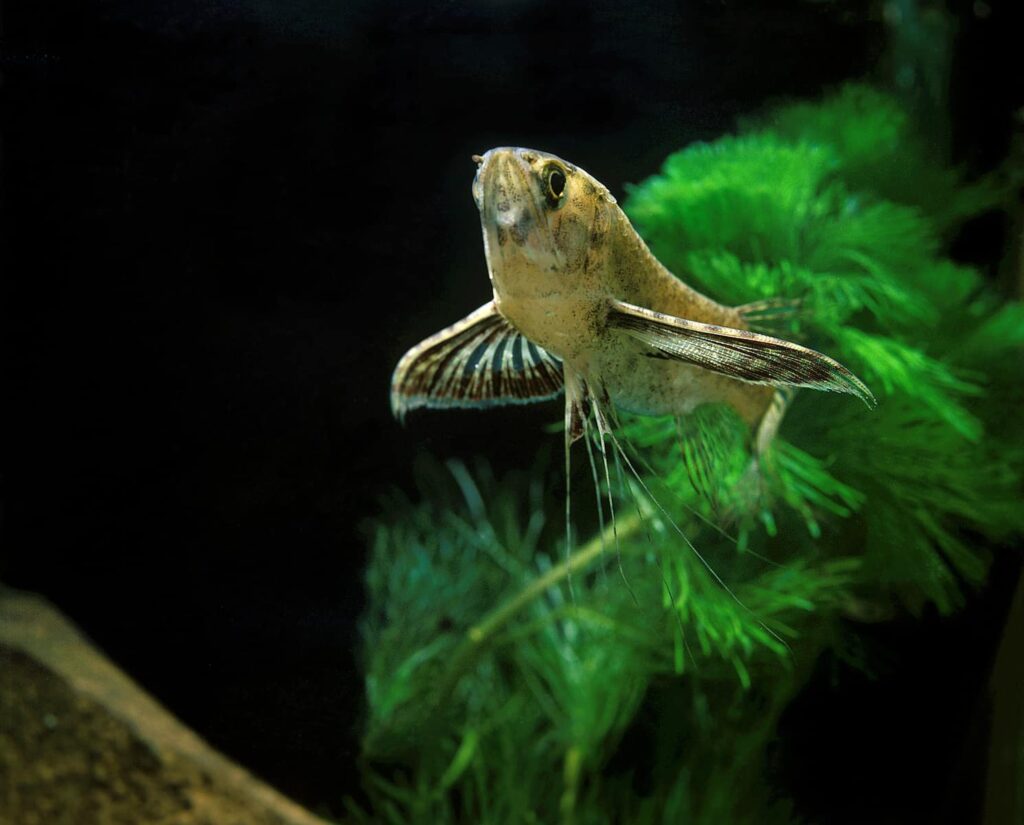Blue hippo tangs are likely very familiar if you have ever seen Finding Nemo or Finding Dory! These are delightful critters to keep in a saltwater tank, but as always, they are going to need special care and attention.

Here is some information to help you decide if these beautiful saltwater fish are the right choice for you and, to help you keep them happy if you do decide to adopt!
- Fish Lifespan: Up to 20 Years
- Tank Size: At Least 70 Gallons
- Water Temperature: Between 72F and 78F
- pH: Between 8.1 and 8.4
- Hardness: Between 8 and 12 dKH
- Compatibility: Compatible with Clownfish, Damselfish, Angelfish and Basslets
- Fish Size: Up to 12 Inches
How do you take care of Blue Hippo Tangs?
Often purchased as juveniles, these striking blue fish with yellow tails and black markings can catch inexperienced fish keepers off guard when they can grow from approximately 1 inch to 6 inches – though it has been known for blue tangs to reach 12 inches in length!
So first things first – is your aquarium large enough? A minimum 70 gallon tank is advisable, but records suggest its owners generally have larger tanks, sometimes double that volume and even greater!
Popular with adults, this fish became especially popular with children after starring in the Disney film ’Finding Nemo’, and as a natural shoal fish they are very social. They swim at varying speeds, sometimes exploring their area slowly, while at other times darting and changing direction suddenly.
These fish need space and interest, especially if they have few companions. In aquariums, it is ideal for your blue tangs to have long lengths of uninterrupted space to swim in, as well as interesting rocky areas which can be navigated at different speeds from different directions. This also makes observation more interesting for onlookers on the outside of the tank!
It may appear that they attempt to play hide and seek games with you! This is instinctive behaviour and known as a form of self-defence in the wild, where fish, like other animals, conceal themselves to avoid detection from predators! Of course, some pet fish owners know when their pets are really just ‘playing games’!
Are blue hippo tangs hard to keep?
Generally considered fairly easy to keep, the eventual size of the adult blue tang needs to be taken into account.

If you buy an adult fish, you will know whether or not the size of your tank is adequate, otherwise you may be faced with buying a second tank if and when your fish grow. Consideration of how many fish will be comfortable in the tank space you have available is advisable too, when fish such as these may grow to become six times the size of when they were purchased!
These fish like to move fast and as they travel at fast speed sometimes, can soon cover the length of water available to them. At other times they idle, appearing to lounge, hidden by features in the tank, such as rocks, shells or ornamental structures.
Are blue hippo tangs aggressive?
Blue hippo tangs can be placid with some other types of fish, but two blue tangs in the same tank can become aggressive, to the point of killing one another!
Blue hippo tangs can develop seriously aggressive behaviour if they are compelled to share the same space! They are not usually as combative with other types of fish and have even been known to sometimes deliberately ‘play dead’ to avoid confrontation!
Blue tangs tend to be pretty easy-going. They tend to be very excitable characters and really do get on well with most fish. However, this can mean that they are at risk of bullying from other creatures, meaning it is a very good idea to try and keep your eye on them as much as possible.
These fish are remarkably playful and therefore make ideal pets for kids and family tanks. However, as mentioned, mixing blue tangs together is not generally the best idea. They can get territorial, which means you are going to need to give them plenty of space. Lots of space is ideal in any case, particularly as they love to dart about.
What does a blue hippo tang eat?
Meaty offerings sold by specialist suppliers are often fed to this fish and its best to check with suppliers if the product is specifically acceptable and safe for your tang.
Most suppliers are happy to give advice on nutrition and it is wise to consider what other fish are in the tank and ensure the food mix is safe/advisable for all its inhabitants. Blue tangs enjoy a mix of foods.
Marine algae, rich in nutrients, as well as flakes (such as spirulina, a food for both fresh and saltwater fish) are good sources of protein. Seaweed, as well as nori and material from live rocks can also provide some nutrition – but is not usually adequate as a sole source of food.
Basically, variety is the spice of life – and apart from ensuring all nutritional requirements are met, a varied diet, especially in captivity, creates more interest for your blue tang.
These omnivores enjoy lots of different things and while they probably won’t be big predators in your tank, it’s not always a good idea to have them mix with smaller fish just in case they take a fancy to any meat that’s swimming around!
How do you care for a blue tang?
Apart from old age, blue tangs can be susceptible to some health problems. Collecting and transporting them from their natural habitat , even from where they are purchased to your home, can cause trauma and injury.
Strong, otherwise healthy tangs, can and often do, recover from minor bumps. They may also be ‘carriers’ of worms or have been swimming with other fish who have them. Of course, there are other diseases which may not be immediately evident and the sooner any ailments are treated the better.

Advice is easy to obtain from a variety of sources and once diagnosis of the problem is accurately achieved, there are range of treatments available. It may be necessary to treat your blue tangs in a separate tank until health is restored.
Caring for a blue tang is otherwise fairly simple as their water needs are nowhere near as complex as those of a cleaner wrasse, for example. Therefore, you’ll likely find them to be great choices for novices. However, just be prepared for these creatures to potentially grow to huge sizes – some blue tangs are tiny, but the biggest varieties really are bruisers!
Can blue tangs live with clownfish?
The simple answer is yes. Two clownfish may fight, however, especially if space is limited. That’s great news for anyone who’s seen a certain Disney film or two a few times already!
Both clownfish and blue tangs need a good deal of space and a minimum of 70 gallons of water to swim in. The bigger the tank the better is a good rule of thumb – but both blue tangs and clownfish of various species can already take up plenty of space even before they start swimming about!
Blue Tangs generally swim faster than clownfish who are known to sometimes dawdle. This makes for an interesting combination of movement for observers to watch and also means the fish do not ‘collide’ or ‘compete’ as with some other types of fish.
Blue tangs get on well with most other fish as they are happy-go-lucky. They will even happily co-exist alongside the irritable damselfish!
What is the lifespan of a blue tang?
In captivity blue tangs can live up to 20 years old, whereas in the wild, they may survive for up to a decade longer.
Much depends on the quantity and quality of the food available. In the wild, they mostly live as omnivores and favour coral reefs. Simulating that environment in an aquarium to give large space for swimming and an interesting landscape enhances their life experience, and inevitably, these fish thrive better in large, interesting tanks.
Should I adopt a blue tang?
If you have the space for a large tank and can source a good healthy food supply for your blue tang, then you will be rewarded with an active display of beautifully coloured, good looking fish who are both entertaining to watch swim as well as play ‘hide and seek’ with. This is a fish that ‘hides’ amongst and rock formations or plants you place in its home!
The electric blue colouring of the fish make it easy to identify. Blue tangs can live for 20 years or more so can be great growing up alongside children and be a good pet for youngsters to become interested in and responsible for looking after.
Certainly following the film ‘Finding Dory’, sales of Blue tangs increased! Their popularity has not waned and apart from their stunning colour, they are happy little characters when they have a big tank in which to play!



